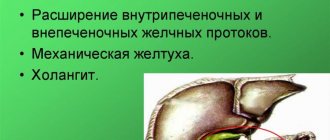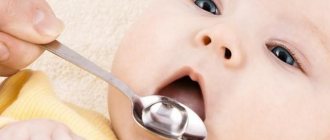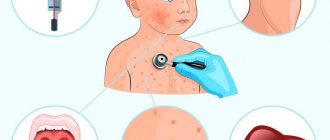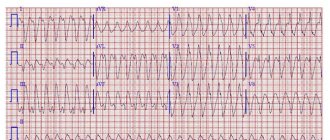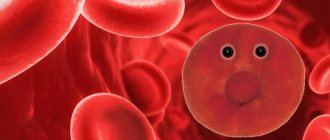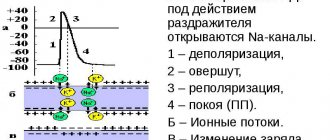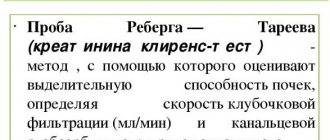Minimum brain dysfunction in children, or abbreviated “MMD,” is a syndrome that includes a complete problematic complex in the psychological and emotional sphere, arising from insufficient productivity of the central nervous system. Symptoms of MMD vary by age, most often occurring in infancy and adulthood.
For example, in very young children, minimal brain dysfunction results in few neurological symptoms. Older children suffer from mental retardation, hyperactivity and an inability to adapt to society, adapt to it and become one with it. The disease is diagnosed using psychological tests and various techniques. Treatment is carried out using pedagogical, psychotherapeutic, pharmacological means.
Minimal cause brain dysfunction
Causes of minimal cerebral dysfunction MMD : severe pregnancy (especially the first half), toxicosis (gestosis), threat of miscarriage, harmful effects on the body of a pregnant woman of chemicals, radiation, vibration, infectious diseases, some microbes and viruses. These are premature and post-term births , weakness of labor and its prolonged course, lack of oxygen (hypoxia) due to compression of the umbilical cord, entanglement around the neck . After childbirth, poor nutrition, frequent or severe illnesses and infections accompanied by various kinds of complications, helminthic infestations and giardiasis, brain contusions, poisoning and unfavorable environmental conditions in the region have an adverse effect on the brain. A common cause of minimal cerebral dysfunction MMD is damage to the cervical spine during childbirth. Such damage can occur when the umbilical cord is entangled around the neck, forceps are applied, or incorrect obstetric manipulations.
Why does minimal brain dysfunction MMD occur?
Currently, minimal brain dysfunction MMD is considered as a consequence of early local brain damage, expressed in age-related immaturity of certain higher mental functions and their disharmonious development. With MMD, there is a delay in the rate of development of functional brain systems that provide such complex integrative functions as speech, attention, memory, perception and other forms of higher mental activity. In terms of general intellectual development, children with MMD are at the normal level, but at the same time they experience significant difficulties in school learning and social adaptation. Due to focal lesions, underdevelopment or dysfunction of certain parts of the cerebral cortex, MMD in children manifests itself in the form of disturbances in motor and speech development, development of writing skills (dysgraphia), reading (dyslexia), and counting (dyscalculia). A common variant of minimal brain dysfunction MMD is attention deficit hyperactivity disorder (ADHD).
Definition of disease
MMD in a child is a deviation from normal development, which is characterized by a slowdown in the growth of brain tissue and a disorder of diffuse cerebral regulation in the structures of the central nervous system at different levels. Pathological processes provoke abnormal perception of the outside world and deviant behavior, disruptions in the functioning of the autonomic nervous system, and psycho-emotional disorders.
Pathology of residual organic origin (arising as a result of birth trauma) develops in children due to insufficient functional activity of parts of the brain. As a rule, it is mild in nature, expressed in minor behavioral deviations and difficulty in learning without obvious deterioration in intellectual abilities.
Minimal brain dysfunction syndrome
The term “ minimal cerebral dysfunction ” became widespread in the late 1950s, when it began to be used in relation to a group of conditions of varying etiology and pathogenesis, accompanied by behavioral disorders and learning difficulties not associated with a general lag in intellectual development. The use of neuropsychological methods in the study of behavioral, cognitive and speech disorders observed in children with MMD allowed us to establish a certain relationship between the nature of the disorders and the localization of focal lesions of the central nervous system. The leading role in the occurrence of MMD belongs to brain hypoxia in the antenatal and intrapartum periods, especially in premature infants. Importance is attached to infectious, toxic and traumatic cerebral disorders, especially in early childhood. In children with minimal cerebral dysfunction MMD, in 25% of cases a complicated history of epilepsy, mental retardation, schizophrenia, migraine and other neuropsychiatric diseases is revealed, which indicates the role of a hereditary factor. In the mechanism of occurrence of MMD, hypofunction of the serotonin, dopamine and adrenergic systems is important.
With perinatal pathology, in 80% of children in the neonatal period, mild general cerebral and, less often, focal disorders are detected, usually diagnosed as perinatal encephalopathy, the manifestations of which are expressed by a delay in the rate of psychomotor development. In 20% of cases, in the presence of risk factors during pregnancy and childbirth, there are no neurological changes in the first months of life, and later they are characterized by various behavioral and autonomic disorders.
Which MMD clinic is in Russia? Minimal brain dysfunction MMD in preschool and early school age is characterized by a pronounced predominance of functional changes over organic ones. Children are hyperactive, cannot concentrate, cannot pay attention, are often distracted, and do not adapt well to unfamiliar surroundings. They have great difficulties while studying, they often show disturbances in perception, including their own body (they confuse the right and left sides, top and bottom), they are unable to distinguish parts from the whole, or distinguish a figure from the background; learning to write, count, and read is difficult . Sometimes there is a mirror spelling of numbers, a replacement of letters that are similar in spelling. Often, incorrect pronunciation of words is detected, auditory perception suffers, performance for abstract thinking and concept formation is reduced, and spatial representation is impaired. Increased impulsiveness and excitability, a low level of control are very characteristic, sometimes there is nail biting, finger sucking, head or body rocking, difficulties in contact with peers, and poor orientation in a team. During an external examination, children with MMD sometimes reveal a number of anomalies in the form of deformation of the skull, ears, abnormal growth of teeth, hypertelorism (an abnormality in the development of the skull bones, characterized by an increase in the distance between the eyeballs and the presence of a wide bridge of the nose), high palate, syndactyly (complete or partial fusion of adjacent fingers or toes). The neurological status can sometimes reveal a number of signs of mild organic brain damage: strabismus, asymmetry of nasolabial folds, muscle dystonia, impaired coordination of movements, asymmetry of tendon-periosteal reflexes, rarely pyramidal and extrapyramidal reflexes.
The children's movements are coordinated, in some cases there is digital apraxia (impaired purposeful action in the absence of muscle paralysis and the preservation of its constituent elementary movements). They have difficulty performing fine movements (fastening buttons, lacing shoes, sewing), draw poorly, and write in uneven and illegible handwriting. Autonomic disorders are also noted: increased sweating, lability of pulse and blood pressure, acrocyanosis (bluish coloration of the distal parts of the extremities), red persistent dermographism. Against this background, various neurosis-like disorders may occur: hyperactivity, tics, “nocturnal” enuresis, encopresis, stuttering. Clinical manifestations of minimal cerebral dysfunction MMD usually increase under the influence of infections, intoxications, stressful situations, allergization of the body, physical and/or mental stress.
A study of the anamnesis of Sarclinic patients shows that at an early age, many children with MMD exhibit hyperexcitability syndrome. Manifestations of hyperexcitability occur more often in the first months of life, in 20% of cases they occur after 8 months of life. Despite the correct regime and care, a sufficient amount of food, children are restless, they cry for no reason. It is accompanied by excessive motor activity, autonomic reactions in the form of redness or marbling of the skin, acrocyanosis, increased sweating, tachycardia, and increased breathing. During screaming, you can observe an increase in muscle tone, tremor of the chin, hands, clonus of the feet and legs, and spontaneous Moro reflex. Sleep disturbances (difficulty falling asleep for a long time, frequent spontaneous awakening, early awakening, startling), feeding difficulties and gastrointestinal disorders are also characteristic. Children have difficulty latching on the breast and are restless during feeding. Along with impaired sucking, there is a predisposition to regurgitation, and in the presence of functional neurogenic pyloric spasm, vomiting. The tendency to loose stools is associated with increased excitability of the intestinal wall, leading to increased intestinal motility under the influence of even minor irritants. Loose stools often alternate with constipation.
At the age of one to three years, children with MMD experience increased excitability, motor restlessness, sleep and appetite disturbances, poor weight gain, and some delay in psycho-speech and motor development. By the age of three, attention is drawn to such features as motor clumsiness, increased fatigue, distractibility, motor hyperactivity, impulsiveness, stubbornness and negativism. At a younger age, they often experience a delay in the formation of neatness skills (enuresis, encopresis).
As a rule, the increase in symptoms of minimal brain dysfunction MMD is timed to coincide with the start of kindergarten or school. This pattern is explained by the inability of the central nervous system to cope with the new demands placed on the child under conditions of increasing mental and physical stress. Increased stress on the central nervous system at this age often leads to behavioral disorders in the form of stubbornness, disobedience, negativism, as well as neurotic disorders and slower psycho-speech development. The maximum severity of MMD manifestations often coincides with critical periods of psychospeech development. The first period includes the age of 1–2 years, when intensive development of cortical speech zones and active formation of speech skills occur. The second period occurs at the age of 3 years. At this stage, the child’s stock of actively used words increases, phrasal speech improves, and attention and memory actively develop. At this time, many children with MMD exhibit delayed speech development and articulation disorders. The third critical period refers to the age of 6–7 years and coincides with the beginning of the development of written language skills (writing, reading). Children with MMD of this age are characterized by the development of school maladjustment and behavior problems. Significant psychological difficulties often cause various psychosomatic disorders and manifestations of vegetative-vascular dystonia.
How to treat minimal brain dysfunction, how to cure mmd in children in Saratov?
Thus, if in preschool age among children with minimal brain dysfunction MMD , hyperexcitability, motor disinhibition or, conversely, slowness, as well as motor clumsiness, absent-mindedness, distractibility, restlessness, increased fatigue, and behavioral characteristics (immaturity, infantilism, impulsiveness) predominate. Among schoolchildren, learning difficulties and behavioral disorders come to the fore. Children with MMD are characterized by weak psycho-emotional stability in the event of failures, self-doubt, and low self-esteem. They often also experience simple and social phobias, short temper, cockiness, oppositional and aggressive behavior. During adolescence, a number of children with MMD experience increased behavioral disturbances, aggressiveness, difficulties in relationships in the family and school, academic performance deteriorates, and a craving for alcohol and drug use appears. Therefore, parents’ efforts should be aimed at timely referral to specialists and comprehensive treatment of MMD. The Sarclinic doctor knows how to treat minimal brain dysfunction, how to cure mmd in children!
Diagnosis of MMD
MMD is diagnosed using several methods. Most often, specialists collect anamnesis and conduct physical and laboratory tests. Using anamnesis, you can determine the etiology and detect primary symptoms. Such information at the age of 3 to 6 years helps to determine the severity and neglect of the syndrome. Speaking about physical research, special emphasis is placed on the physiology of the child, the work of her reflexes and their symmetry.
A complete examination of a school-age child will not provide a lot of useful information; nevertheless, the main role in the examination is played by psychological diagnostics, which allows the doctor to understand at what level of development the child is and what the degree of his illness is. When examining, most doctors use proven and reliable Gordon or Wechsler tests.
It is extremely important to assess the state of the central nervous system. The assessment is determined using EEG studies, rheo- and echoencephalography, neurosonography, computed tomography and magnetic tomography. In the diagnosis of minimal cerebral dysfunction syndrome, tests obtained using CT or MRI play an important role.
Minimal brain dysfunction treatment, treatment of mmd in children
Sarklinik successfully applies complex reflexology methods for the treatment of minimal brain dysfunction in children . As a result of treatment of mmd in children , the activity of the serotonergic, dopaminergic and adrenergic systems, autonomic tone is normalized, attention, visual-spatial perception, spatial thinking, hand-eye coordination, auditory-verbal and visual memory are improved, cerebrasthenic symptoms, psychosomatic disorders, anxiety, various types of fears, obsession, motor disorders, oral speech disorders, emotional and volitional disorders, behavioral disorders, aggressiveness and oppositional reactions, school learning difficulties; reading and writing disorders, increased fatigue, moodiness, tearfulness, mood swings, poor appetite, headaches, sleep disturbances in the form of difficulty falling asleep, restless shallow sleep with disturbing dreams are eliminated. In most cases, regression of psychosomatic disorders is observed: causeless pain in the abdomen or in various parts of the body, enuresis, encopresis, parasomnias (night terrors, sleepwalking, sleep talking). Neurohumoral changes, pathological endocrine and neuroallergic reactions are normalized, and neurotic disorders that arise during the course of the disease are corrected.
Diagnostics
Diagnostics is primarily aimed at recognizing personality type. Psychodiagnostics involves the use of tests to identify specific difficulties that a child has, the level of his emotional development, anxiety, and motor function. Basic techniques:
- Gordon system. Shows the level of general development.
- Wechsler test. The principle of verbal-nonverbal creativity.
- Berder-Gestalt test. Determination of the level of intelligence and cognitive capabilities.
- Toulouse-Pieron test. Determining the level of attention.
The diagnosis of MMD is a pathology that is detected using instrumental methods, which allows one to draw informed conclusions about the child’s health status. Neurosonography, electroencephalography, rheoencephalography, echoencephalography are performed. X-ray examination of the cervical spine and skull is indicated to differentiate diseases of organic origin.
Treatment of mmd in children in Russia
Treatment of minimal brain dysfunction in children (Russia, Saratov) leads to the following positive dynamics: there is a decrease in clumsiness, clumsiness, poor coordination of movements and difficulties in fine motor skills, improvement in attention characteristics, violations of which before treatment usually manifested themselves in the form of difficulties in concentrating when performing household and school assignments, during games, easy distractibility, inability to complete tasks independently, to complete a task, as well as the fact that children answered questions without thinking, without listening to them to the end, often lost their things in kindergarten, school or at home . At the same time, many children with MMD experience regression of emotional and volitional disorders (the child behaves inappropriately for his age, is small, shy, is afraid of not being liked by others, is overly touchy, cannot stand up for himself, considers himself unhappy), the severity of behavioral disorders decreases ( teases, explains, is sloppy, unkempt, noisy, disobedient at home, does not listen to the teacher or teacher, acts up in kindergarten or at school, deceives adults) and manifestations of aggressiveness and oppositional reactions (hot-tempered, unpredictable behavior, quarrels with children, threatens them, fights with children, is insolent and openly disobeys adults, refuses to fulfill their requests, deliberately commits acts that irritate other people, deliberately breaks and spoils things, treats pets cruelly). In the majority of children undergoing treatment in our clinic, the elimination of oral speech disorders, school learning difficulties, reading and writing disorders is reliably noted; in the majority of patients, by the end of the course of treatment, speech and school performance improve, reading, writing and arithmetic indicators in children with such problems are normalized pathologies such as dyslexia, dysgraphia and dyscalculia.
Effective treatment of minimal brain dysfunction in Saratov
The effectiveness of complex treatment of minimal cerebral dysfunction (MCD) , which may include reflexology, acupuncture, microacupuncture, laser reflexology, moxibustion, non-traditional and other techniques, reaches 95%. Treatment at Sarklinik is carried out on an outpatient basis and individually. All methods are safe.
Come and Sarklinik will help you! The Sarclinic doctor treats MMD in children. Treatment of minimal brain dysfunction in children in Saratov can improve the child’s memory, logic, speech, writing, and intelligence. MMD needs to be treated.
Sarklinik knows how to treat minimal brain dysfunction !
Sign up for a consultation. There are contraindications. Specialist consultation is required.
Photo: Legaa | Dreamstime.com\Dreamstock.ru. The people depicted in the photo are models, do not suffer from the diseases described and/or all similarities are excluded.
Related posts:
Agrammatism, paragrammatism, dysgrammatism
Akatagraphy, treatment of akatagraphy
Headache in children, treatment, how to get rid of it, how to relieve it
Encopresis in children, neurotic encopresis, treatment of encopresis
Parasomnia, illnesses during sleep and upon awakening
Comments ()
MMD, PEP, SPNRV - diagnosis and treatment
Almost every child in his medical record has a note from a neurologist and pediatrician with a diagnosis such as MMD, PEP or SPNRV, meaning syndrome of increased neuro-reflex excitability. Unfortunately, doctors do not always explain incomprehensible abbreviations. This is often the reason that parents do not even know what diagnosis their child has, much less have any idea what to do about it.
The diagnosis of PEP means perinatal encephalopathy, which is a lesion of the nervous system, the main role in the formation of which is due to fetal hypoxia (oxygen starvation). The most severe complication of PEP is cerebral palsy (CP).
The diagnosis of MMD means minimal brain dysfunction, which is a dysfunction of the central nervous system as a result of microdamage to the cerebral cortex, as well as subcortical structures. It occurs mainly due to oxygen starvation of the fetus, which occurs in the prenatal period and during the birth process itself, as well as due to birth trauma. The doctor may write down such a diagnosis as MCD, which means minimal cerebral dysfunction. The most common manifestation of MMD is hyperdynamic syndrome, which is a syndrome of motor disinhibition.
It is quite difficult for parents to associate these diagnoses with fatigue and lethargy or, what happens more often, with the baby’s severe excitability. The child screams a lot, while screaming his chin begins to tremble, he constantly spits up, his body reacts strongly to worsening weather. Also, his tummy is swollen, bowel movements are not normal (he has a tendency to constipation or, on the contrary, too often). The baby is whiny, gets excited quite easily and has difficulty calming down, sleep is disturbed, tone increases, the child begins to throw back his head, suffers from intracranial pressure, etc. Then, as he grows up, he may develop a delay in speech development, restlessness, disinhibition, and disobedience.
But most problems can be avoided if parents take it seriously enough, but without unnecessary drama. The indicated diagnoses in the child’s medical record are not a signal to panic, but a signal to take action! First, you should definitely consult a neurologist. In the case when the doctor does not prescribe any treatment, only claims that everything will go away with age, then it is necessary to urgently look for another doctor. Perhaps it will pass, but not for all, but only for some children. The rest are forced to bear such a burden all their lives.
When a child is diagnosed with MMD or PEP, a course of treatment is urgently needed. The treatment process depends on the age and the specific case. You should not be afraid of the medications your doctor prescribes, even if your grandmother takes these medications for multiple sclerosis! After all, grandma needs to improve cerebral circulation, just like your baby, the only difference is in the dosage. In addition to drug treatment, the child needs massage, physiotherapy, physical therapy, and, if necessary, classes with a psychologist or speech therapist. The sooner qualified treatment begins, the faster and better the result will be.
However, you should not panic and think that the doctors have discovered something terrible in the baby: the disorder will go away over time, but first it will cause a lot of trouble and hassle. Is it possible to avoid them? Certainly! But, unfortunately, the symptoms of MMD and PEP in many cases are not perceived by parents as pathological and are not a reason to contact a doctor - a neurologist. For a long time, parents cannot assess the child’s condition, but characterize some features of his behavior as “restlessness,” “laziness,” “spoiledness,” “nervousness,” etc.
By answering “yes” to the questions, parents can independently determine whether the child has any grounds that “claim” a diagnosis of MMD and PEP. In the first year of his life, does the baby cause concern to doctors due to increased excitability, impaired muscle tone, or other manifestations of perinatal encephalopathy? If so, do you neglect the doctors’ recommendations, believing that “everything will go away on its own”?
Does your child have difficulty falling asleep, constantly wakes up at night, screams in his sleep and tosses and turns? Do you think that he gave up sleeping during the day quite early (before 6 years of age)? With restless and noisy, and sometimes even aggressive behavior, the baby looks like a little robber, does not pay any attention to prohibitions, does it find it difficult for him to concentrate on a board game or a book that requires patience and attention?
Quite often he is not in the mood, is capricious for any reason and cries, looks embittered, is there frequent absent-mindedness and frequent mood swings? Do you behave and feel unwell during magnetic storms and weather changes?
Does he complain of headaches from time to time, wears panama hats and larger hats than his peers? The head circumference of a child aged one year is 46 cm, at two years - 48 cm, at three - four years - 49 cm, at five years - 50 cm, and subsequently it increases by 1 cm per year to a value of - 55- 58 cm.
Is it quite difficult to integrate into the team and has great difficulty getting used to any changes or new surroundings?
Seems clumsy and awkward, unable to participate in outdoor games that require coordination of movements?
Quite quickly he began to wear down his shoes, and while walking he gets a little clubbing - he puts his feet inward with his toes, and does not load the entire foot, but only its toes and the inner edge?
Does he pronounce some phrases incorrectly or stutter, does he not remember children's poems very well, is he unable to clearly retell any passage from a fairy tale he has just read?
Before falling asleep, does he rhythmically rock his body or shake his head, bite his nails, suck his fingers, roll small objects in his hands, or wrap a piece of hair around his finger? Have you noticed many “bad habits”?
If any of these problems are present in the baby, you should not postpone a visit to a neurologist; you must tell the doctor in detail about everything that worries you in the child’s behavior. If you don’t contact a specialist in time, thinking that everything will go away on its own, then many problems will await you when your child enters first grade.
In order to prepare a child diagnosed with MMD and PEP for school, it is not enough to just learn numbers and letters. The main thing is that it is necessary to strengthen his weakened nervous system, provide assistance to it, and prepare it for the upcoming training load. The sooner you begin to “put in order” the baby’s nervous system, the more effective and better the result will be. It is up to the parents to ensure that the treatment process does not drag on for many years, but happens as quickly as possible! Treatment consists not only in pills and mixtures, but also in the desire to create the necessary environment in the family, which will “work” for the baby’s speedy recovery. To do this, first of all, you need to correctly understand what is happening to the child and take it seriously. Sometimes he would be glad to be smart and a good girl, but he just doesn’t have any sweetness with himself. It is necessary to take action at a family council on some points on which the baby’s recovery directly depends.
You should seek out recommendations from friends and visit a highly qualified neurologist. It is imperative to undergo a course of treatment and constantly see a doctor.
The child needs to go to bed, get up in the morning, eat, and go for a walk at the same time. Previous habitual actions are precise signals of a certain time that synchronize the activity of the nervous system, and deviations from the regime cause disruption to the nervous processes.
Make an effort, do everything in your power to organize the child’s daytime rest - a weakened nervous system needs afternoon rest. It is not recommended to often invite guests to your home, take your child to visit, to entertainment clubs, to parties, etc. Since the child’s usual daily routine is disrupted as a result, the child is overwhelmed with unnecessary impressions and emotions.
You should take control of the child’s communication process with his peers. It should not be long and tedious. Making friends with disinhibited children is strictly contraindicated. To get acquainted, you need to choose a non-aggressive, calm, older child.
You should never sort things out if a child is nearby - disagreements between adults greatly deplete the child’s psyche, delaying the moment of victory over minor brain dysfunction.
It is necessary to impose a ban on computer games and television: flashing frames will provoke a convulsive attack and will shake the child’s far from iron nerves. You should rid him of aggressive cartoons.
There is no need to take your child on foreign tours, countries with hot climates, or sunbathe with him. The best rest for him is to spend his leisure time at the dacha in the shade of rowan trees, apple trees and birch trees. If your baby needs water and sea air, it is better to go to the resort during the high season and for a period of no more than two months. Children's leisure activities should be organized that will bring health benefits, which will include swimming, physical education or outdoor games, which in turn improve accuracy and coordination of movements.
Let the child cut out more, draw, fold, glue, build from construction sets, assemble mosaics, etc. All this contributes to the development of fine motor skills of the hands, the development of visual memory and spatial orientation.
It is necessary to read fairy tales and poems to your child more often; you should listen to calm music, folk songs, and children's songs with him.
You should not take a preschool child to various sections, clubs, music school, foreign language lessons or to prepare for school. Until you fully cope with the possible consequences of MMD and PEP, since the child is unlikely to make any progress. The child will only suffer harm. And besides, you should not send your child to a gymnasium with several foreign languages that will be taught already in the first grade, and exams that will be held at the end of each year. Before going to school, you need to talk to the teacher, talk about the child’s problems, and ask for the individual approach that the child really needs.
Parents, remember that only comprehensive treatment, a kind and bright environment in the house, a calm regime and correctional work with specialists: speech therapist, speech pathologist, teacher, psychologist can help cope with the possible consequences of MMD and PEP in a short period of time.
